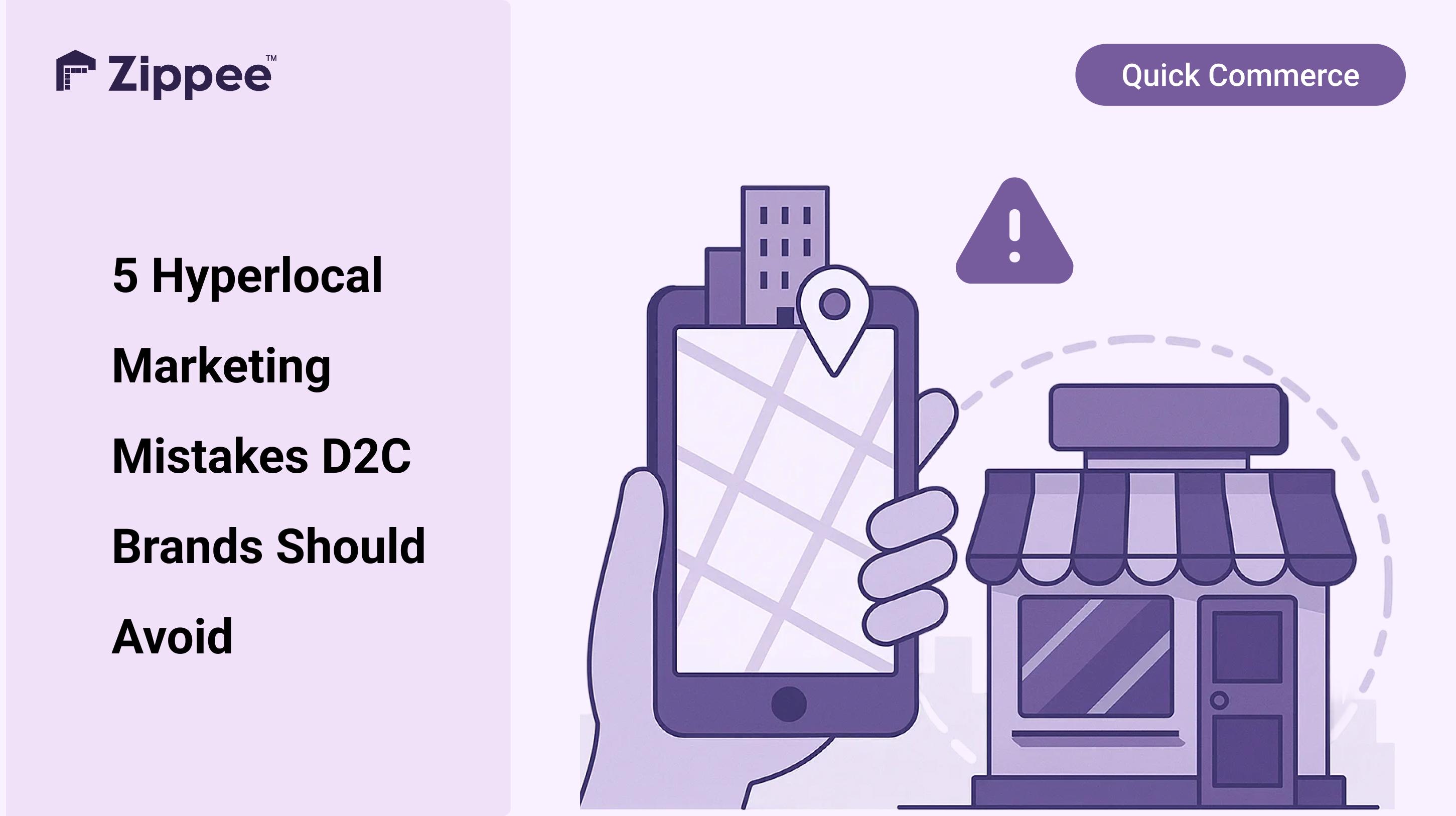
5 Common Pitfalls in Hyperlocal Marketing (and How Brands Can Avoid Them) :
Hyperlocal ecommerce has redefined how brands reach customers, especially in Indian metros, where expectations for same-day and quick commerce logistics are now the norm. But with these opportunities come critical pitfalls. From mismanaged dark stores to ignored customer feedback, even top D2C teams often get hyperlocal delivery wrong.
This guide outlines the five most common mistakes ecommerce brands make in hyperlocal marketing and logistics and how to avoid them with real-world fixes backed by data and experience.
1. Overlooking Google My Business (GMB) — Your Digital Storefront
For hyperlocal brands, your Google My Business profile often shows up before your website. An incomplete or outdated listing can cost you visibility, trust, and customers.
How to Fix It?
- Complete every field: Address, hours, categories, and contact info.
- Update regularly: New service areas, timing changes, or holiday hours.
- Add photos and reviews: Local photos and active review management boost visibility and conversion.
Tip: GMB listings are one of the most cost-effective and underutilised hyperlocal marketing assets for Indian D2C brands.
2. Ignoring Reviews and Customer Feedback
Online reviews are no longer optional; they directly impact conversions.
According to PowerReviews, 99.9% of customers read reviews, and 96% specifically check negative ones before making a decision (Source). For hyperlocal D2C brands, where impulse buying and fast fulfilment dominate, reviews often act as the final nudge.
How to Fix It?
- Ask at the right time: Prompt users post-delivery through WhatsApp or email.
- Respond consistently: Thank positive reviewers, resolve issues openly with critics.
- Use insights: Feedback helps refine products, CX, and delivery processes.
Read Related: How to Reduce RTO Rates and Boost First Attempt Deliveries
3. Mismanaging Dark Store Operations
Dark stores are the logistical backbone of quick commerce delivery, but poor planning here eats into your margin fast.
India’s quick commerce sector proves the scale: as of March 2025, platforms like Blinkit, Zepto, and Swiggy Instamart delivered 4.15–4.45 million daily orders, more than doubling their March 2024 numbers (Source: The Ken). That demand isn’t limited to groceries—personal care, accessories, and essentials are now part of this momentum.
How to Fix It?
- Optimise inventory: Track fast and slow movers city-wise.
- Automate wherever possible: Reduce picker errors and packing delays.
- Control labour costs: Use shift planning tools tied to demand forecasting.
Poor dark store strategy is one of the top reasons for failed quick commerce logistics execution.
4. Sending Generic Messaging to Local Audiences
In hyperlocal commerce, generic campaigns flop. Localised content can lift conversions significantly, especially when paired with fast delivery.
How to Fix It?
- Use city-specific language and references.
- Partner with micro-influencers: They're trusted more than national celebrities.
- Align with festivals and events: For example, run express delivery campaigns tied to Onam in Kerala or Navratri in Gujarat.
D2C brands see up to 20% higher engagement when content and offers are tailored to regional preferences.
5. Inefficient Last-Mile Delivery
The last mile is the most expensive, most error-prone, and most visible part of your logistics chain. And it matters.
A study by Digital Commerce 360 showed 23% of consumers abandon carts due to slow delivery (Source: Digital Commerce 360). In India’s quick commerce boom, even 2-day delivery feels slow in tier-1 cities.
How to Fix It?
- Use dynamic route optimisation: Real-time adjustments for traffic and density.
- Enable live tracking: On WhatsApp/SMS, with estimated delivery windows.
- Build a hybrid fleet: Blend in-house riders with third-party gig networks during peak hours.
Want to see this in action? Explore how brands use Zippee to power 60 minute and 2 hour delivery
Beyond the Top 5: Common Hyperlocal Growth Challenges
Even if your basics are strong, these obstacles often surface during scaling:
- Marketplace dependency: High fees, limited brand control.
- Demand volatility: Especially around festivals or sudden weather events.
- Cross-city logistics complexity: Expanding operations without partners leads to fragmentation.
- Customer expectation mismatch: Promising fast delivery without fulfilment backup leads to RTOs and churn.
The Smarter Hyperlocal Strategy for Indian D2C Brands
Winning at hyperlocal ecommerce doesn’t mean copying Zepto’s playbook—it means adapting smarter.
Here’s what works:
- Invest in the right tools: Inventory, order routing, and fleet management must talk to each other.
- Work with experienced logistics partners: Not just couriers—look for a quick commerce delivery partner with fulfilment and dark store capabilities.
- Build brand presence locally: Use reviews, UGC, and regional campaigns.
- Track smarter metrics: First-attempt delivery rates, NPS, SLA adherence—not just shipping cost per order.
That’s why more D2C brands are turning to zippee delivery for D2C brands—a model built around plug-and-play dark store access, real-time tracking, and city-wise SLA reliability.
Related: Top Quick Commerce Logistics Partners for D2C Brands
Conclusion: Deliver Better. Scale Faster.
Hyperlocal ecommerce isn’t a shortcut. Done wrong, it drains margins and erodes trust. But done right, it’s a competitive edge that converts faster and retains longer. Avoid the common traps: GMB neglect, unmonitored feedback, inefficient ops, generic messaging, and last-mile delays.
Align with the right strategy, use the right tools, and work with a logistics model that understands quick commerce logistics from the inside out.





.png&w=256&q=75)













